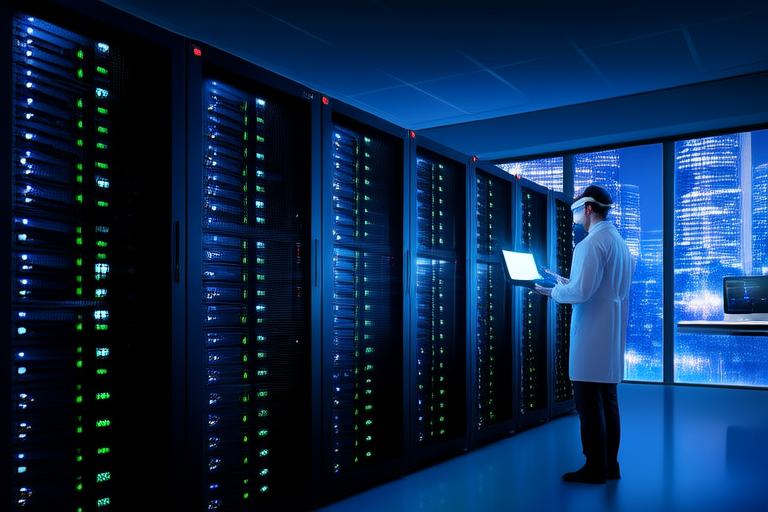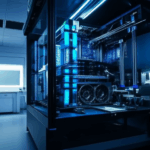The Future is Now: How Computer Vision is Reshaping Industries
Introduction:
In an era dominated by rapid technological advancements, computer vision has emerged as a pivotal force, transforming industries across various sectors. This powerful technology enables machines to interpret and understand visual information, much like human eyes and brains. From healthcare to agriculture, computer vision is revolutionizing the way we interact with the world around us. As industries increasingly rely on this technology, it is clear that the future is now.
What is Computer Vision?
Computer vision is a field of artificial intelligence (AI) that focuses on enabling computers to interpret and understand visual information from digital images or videos. By analyzing pixel data, computer vision systems can detect objects, recognize patterns, and make decisions based on visual inputs. At the core of computer vision lies several key technologies, including image processing, deep learning, and neural networks.
Image processing involves manipulating digital images to enhance their quality or extract useful information. Deep learning, a subset of machine learning, allows computers to learn from vast amounts of data and improve their performance over time. Neural networks, inspired by the structure and function of the human brain, enable computers to process complex patterns and make accurate predictions.
Applications Across Industries:
Healthcare: In the healthcare sector, computer vision is revolutionizing medical imaging, diagnostics, and patient care. Radiologists can leverage advanced algorithms to analyze X-rays, MRIs, and CT scans, detecting anomalies with unprecedented accuracy. Additionally, computer vision aids in surgical procedures, providing real-time guidance to surgeons and enhancing patient outcomes.
Manufacturing: In manufacturing, computer vision is utilized for quality control, predictive maintenance, and automation in factories. By analyzing production lines in real-time, computer vision systems can identify defects, optimize processes, and reduce waste. Furthermore, predictive maintenance ensures equipment operates at peak efficiency, minimizing downtime and maximizing productivity.
Retail: In retail, computer vision enhances customer experiences, inventory management, and cashier-less stores. Through facial recognition and gesture-based interactions, customers can receive personalized recommendations and seamless checkout experiences. Moreover, computer vision automates inventory tracking, ensuring stock levels are optimized and reducing manual labor.
Transportation: In transportation, computer vision powers autonomous vehicles, traffic management systems, and safety features. Autonomous vehicles rely on computer vision to navigate roads safely, while traffic management systems utilize real-time data to optimize traffic flow and reduce congestion. Advanced safety features, such as lane departure warnings and collision avoidance systems, further enhance road safety.
Security: In security, computer vision is employed in surveillance, facial recognition, and threat detection systems. Surveillance cameras equipped with computer vision can monitor large areas in real-time, identifying suspicious activities and alerting authorities. Facial recognition technology enables secure access control, while threat detection systems help prevent incidents before they occur.
Agriculture: In agriculture, computer vision is used for crop monitoring, yield prediction, and precision farming. By analyzing aerial imagery and satellite data, farmers can monitor crop health, detect pests, and optimize irrigation. Yield prediction models provide valuable insights into harvest forecasts, helping farmers make informed decisions. Precision farming techniques, guided by computer vision, ensure resources are used efficiently, maximizing productivity and sustainability.
Challenges and Ethical Considerations:
Despite its numerous benefits, the adoption of computer vision presents several challenges. Data privacy concerns arise when sensitive information is collected and analyzed, necessitating robust security measures. Biases in algorithms can lead to unfair treatment, particularly in areas like facial recognition and hiring practices. Additionally, the need for robust infrastructure, including high-speed internet and reliable hardware, poses significant hurdles.
Ethical considerations also come into play. The impact on jobs, particularly in sectors reliant on manual labor, cannot be overlooked. Ensuring data security and preventing the misuse of technology are paramount. Striking a balance between innovation and responsible use is essential for sustainable growth.
Future Outlook:
The future of computer vision holds immense promise, with emerging trends and advancements in AI driving continuous progress. Emerging trends include the integration of computer vision with other technologies, such as augmented reality and robotics, to create immersive experiences and intelligent systems. Advancements in AI, particularly in areas like natural language processing and multi-modal learning,将进一步提升计算机视觉的能力。未来,计算机视觉有望在更多领域实现突破,改善我们的日常生活。随着技术的不断进步,计算机视觉将继续重塑各个行业,推动创新和发展。
Conclusion:
总结本文讨论的关键点,强调计算机视觉的变革力量及其在多个领域的潜力。计算机视觉不仅提高了生产力和效率,还改善了我们的日常生活。随着技术的不断发展,计算机视觉将继续推动创新,为未来的科技发展奠定坚实的基础。我们期待着计算机视觉带来的更多可能性,并相信它将为人类带来更美好的未来。


